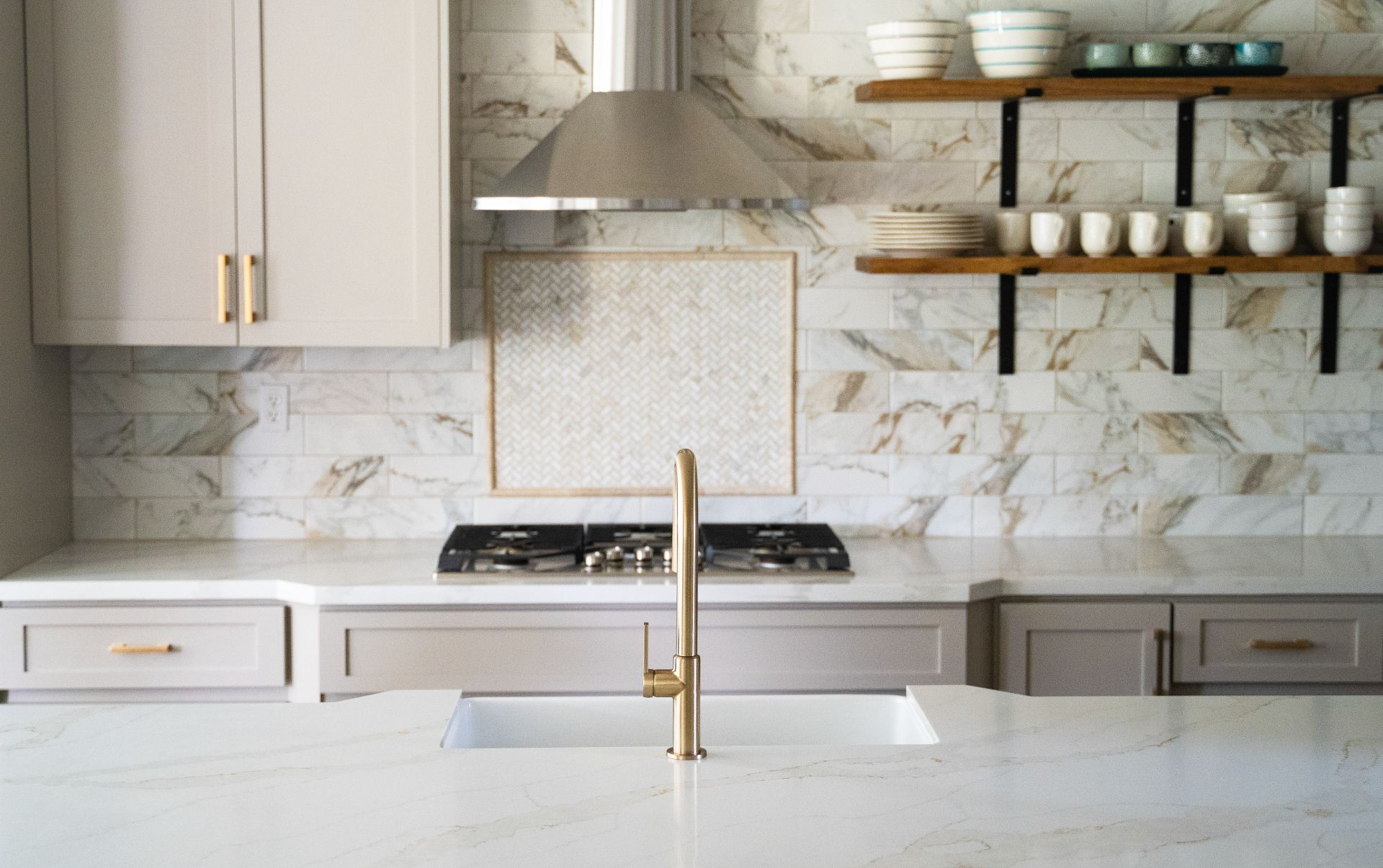A well-executed tile installation isn’t complete without the right trim. If you’re planning a backsplash, shower wall, or tiled floor, exploring the right tile edge trim ideas can make all the difference in creating a clean, finished look. From protecting exposed edges to creating clean transitions and adding a touch of style, trim is a foundational part of the tile selection and design process.
In this guide, we’ll walk through the different types of tile trim, how they’re used, and creative tile trim ideas for every room. Whether you’re looking for a clean and modern or bold and decorative design, you’ll find inspiration and practical advice to help you make the right choice for your space.
What Is Tile Trim and How Is It Used?
Tile trim refers to the finishing pieces used to complete the edges, corners, and transitions of a tiled surface. While the primary tiles cover the main area, trim ensures that every visible edge looks clean, polished, and protected, adding the finishing touch that pulls the entire design together and gives it a professional-grade appearance. Beyond aesthetics, tile trim plays the following functional roles:
- Edge protection: Trim shields tile edges from chipping or cracking, especially in areas where the tile ends or meets another surface.
- Clean transitions: It creates a smooth, finished bridge between tile and other materials, such as drywall, paint, wood, or carpet.
- Design enhancement: Trim can frame a feature wall, outline a shower niche, or add visual contrast between different tile patterns.
- Safety and hygiene: Rounded trims soften sharp edges and eliminate crevices where dirt or moisture can collect, making the space safer and easier to clean.
What Are the Different Types of Tile Trim?
Choosing the right tile trim is just as important as selecting the tile itself. Each type of trim serves a specific purpose. Some are designed to protect edges, while others add structure or decoration to the overall layout. The best choice depends on the material you’re using, the location of your tile installation, and the look you want to achieve. Below are some of the most commonly used types of tile trim, along with where and why you might use them.
Bullnose Trim
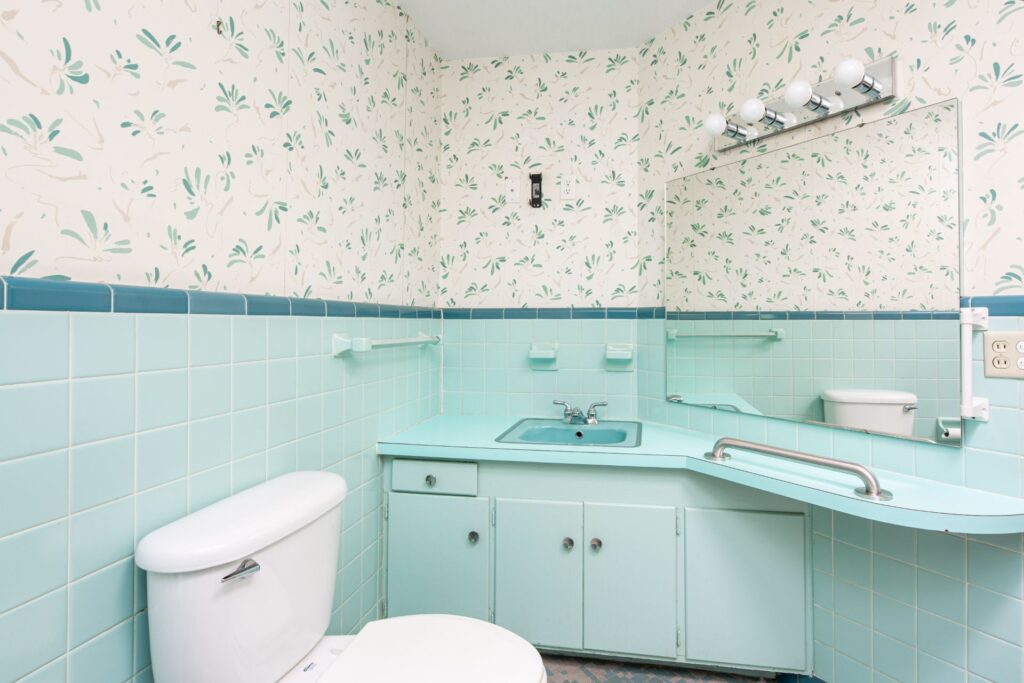
Bullnose trim is typically a tile with one rounded finished edge, used to cap off the side of a tile installation where the edge would otherwise be exposed. It’s perfect for bathroom walls, kitchen backsplashes, shower niches, and countertops. The rounded edge not only protects against chipping but also gives the installation a polished, professional look.
Pencil Liner Trim
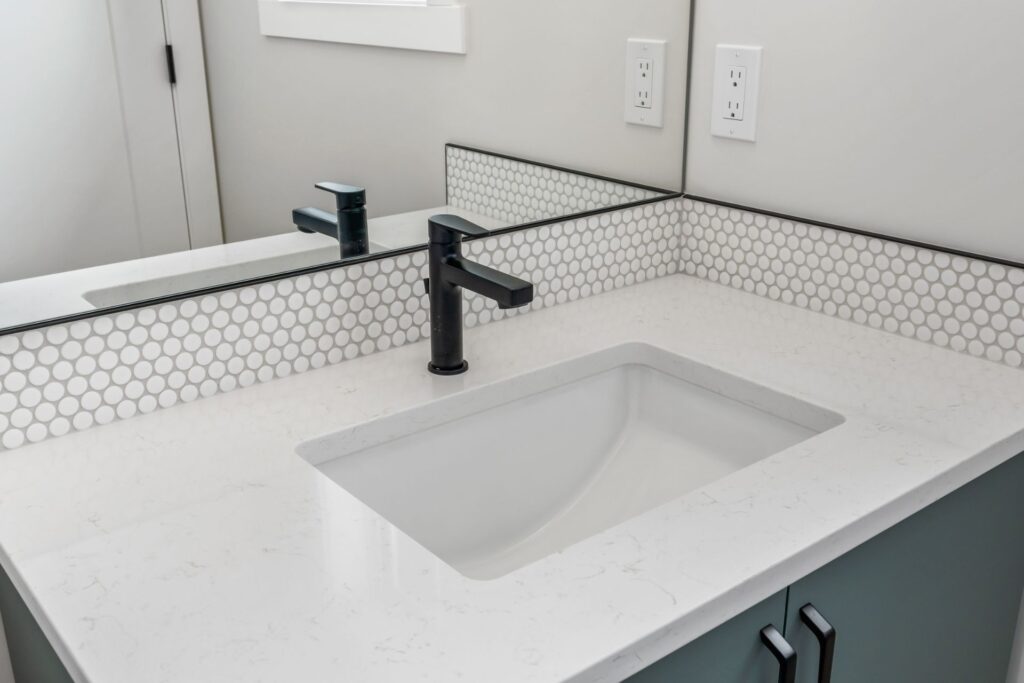
Pencil liner is a slim, narrow tile trim used to frame, separate, or highlight areas within a tiled wall or backsplash. Shaped like a thin rod or rectangular strip, it’s ideal for outlining niches, bordering mosaic insets, or breaking up large sections of tile. Available in materials like glass, ceramic, metal, and porcelain, pencil tile trims work well in both modern and traditional designs, offering subtle structure and elegance without overpowering the overall look.
Decorative Borders and Accent Tiles
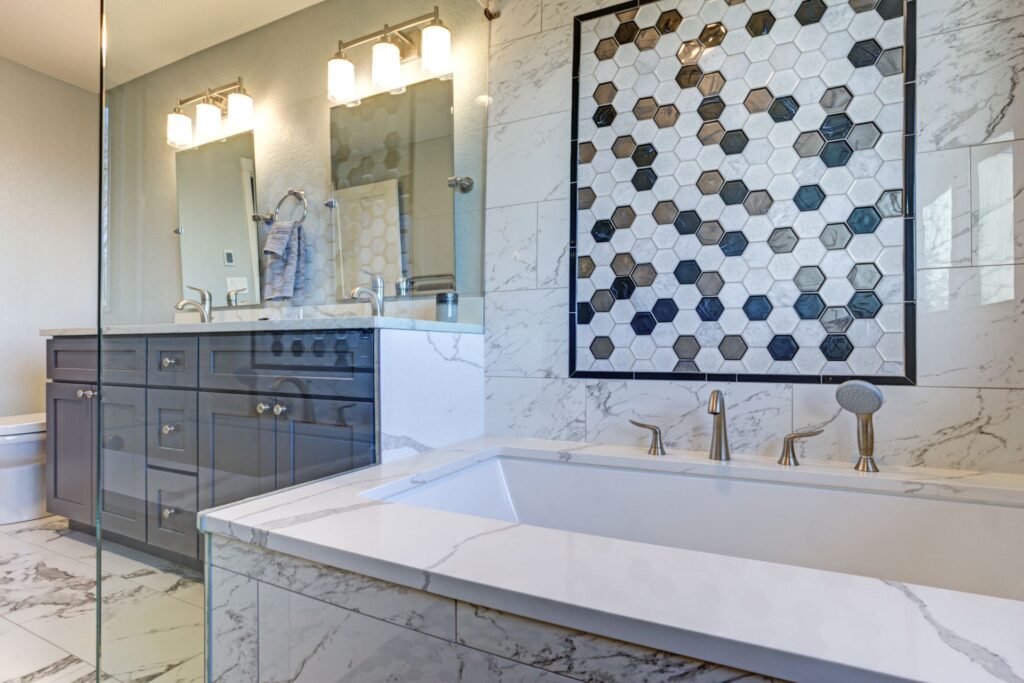
Decorative border and accent tiles are designed to stand out. These tiles typically feature patterns, textures, or colors that contrast with the surrounding field tile, drawing the eye and adding personality to the space. They’re often used to break up large expanses of tile, create a focal point, or emphasize architectural lines.
Border tiles are usually installed in a horizontal line, often around the midpoint of a wall or as a cap between different tile styles. Accent tiles can be used more flexibly as individual inserts, grouped panels, or feature stripes. They’re often chosen to echo colors from other elements in the room, such as cabinetry, hardware, or flooring, helping tie everything together visually.
Chair Rail Tile
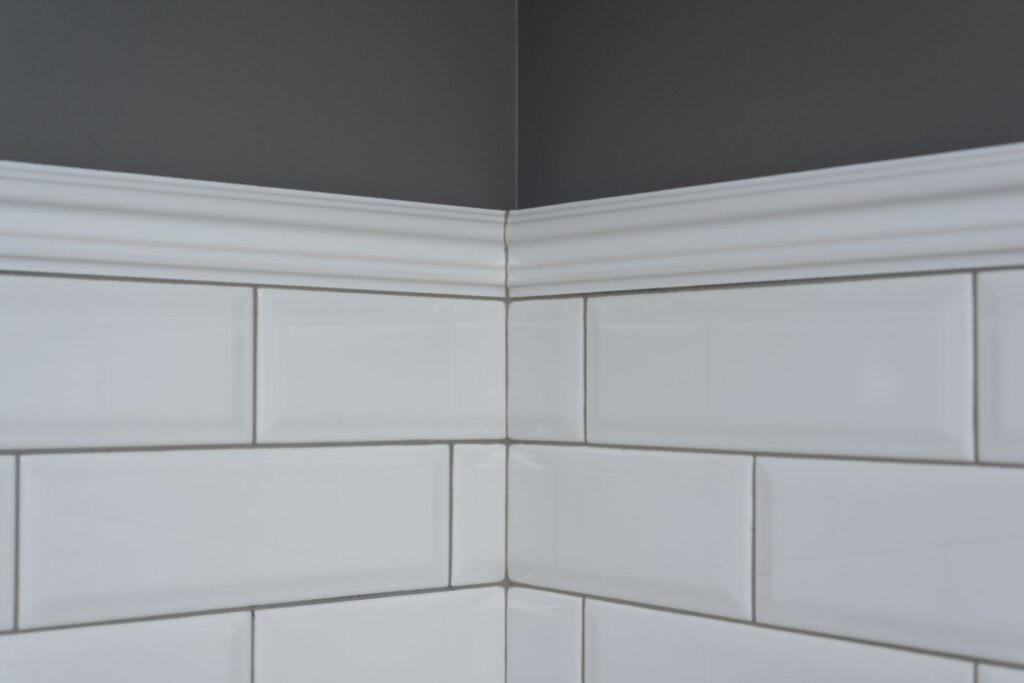
Chair rail tile is a decorative trim with a rounded, sculpted profile that mimics traditional chair rail molding. It’s often installed about one-third up the wall in bathrooms or powder rooms to help separate different tile styles or finishes for added depth and contrast. Beyond its elegant look, chair rail tile also protects walls from minor damage and suits a range of styles from classic to transitional, even adding charm to modern spaces when used selectively.
Metal Tile Trim
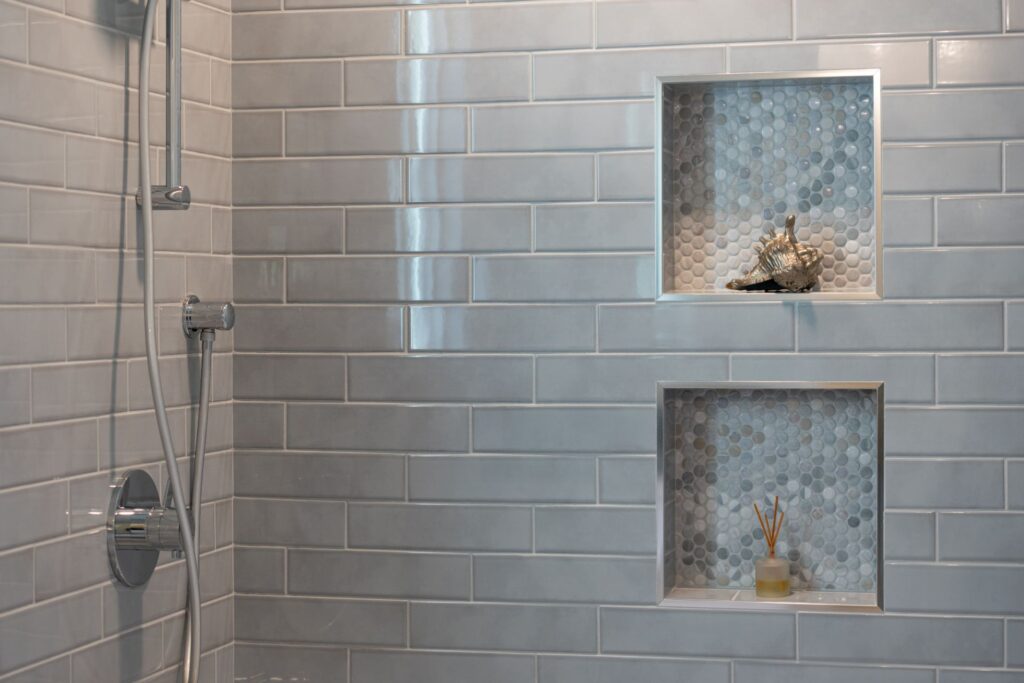
Metal trim creates a clean, modern finish for tile edges using materials like aluminum, stainless steel, or brass. It’s ideal for contemporary spaces and is used to frame backsplashes, niches, steps, and transitions between tile and other surfaces. Available in various shapes and finishes, from matte black to brushed nickel, metal trim adds durability, moisture resistance, and precision to both decorative and high-traffic areas.
Additional Types of Tile Edge Trim
These trim styles aren’t essential for every project but play important roles in specialty applications, particularly in curved areas, exposed edge conditions, or floor-level transitions that require extra durability, cleanliness, or visual polish:
- Radius trim: Used to finish curved or recessed surfaces like arched shower niches, bench fronts, or custom shelving. Radius trim features a more pronounced, rounded profile than bullnose, allowing it to bend or follow subtle curves. It’s ideal for spaces where sharp corners would feel too harsh or create awkward transitions.
- V-cap edging: Also known as double bullnose, V-cap trim features a distinctive L-shaped profile that wraps over the edge of tiled surfaces, covering both the top and vertical faces. It’s commonly used on tiled countertops, shower curbs, and half walls, providing full edge protection and giving exposed corners a clean, finished look from multiple angles.
- Quarter-round: A small, quarter-circle trim used where tiled surfaces meet perpendicular walls or other finishes. Often placed along the top edge of a tiled backsplash or where wall tile meets a painted surface, the quarter-round smooths transitions and protects corners from chipping. It’s particularly useful for softening the edges of sharp tile cuts and concealing uneven intersections.
- Cove base tile: A curved base trim that transitions cleanly from wall to floor, often used in bathrooms, showers, laundry rooms, and commercial settings. The concave shape helps prevent water from pooling in corners, such as those in your shower pan, and makes cleaning easier by eliminating sharp grout joints.
- Base tile trim: A flat or slightly curved trim tile installed along the base of a tiled wall, functioning much like a baseboard. It visually anchors the wall tile and protects the lower portion of the wall from impact or moisture. This trim is commonly used in bathrooms, kitchens, and mudrooms and can be matched to the wall tile for a seamless look or used in contrast for a decorative effect.
How Can These Tile Trim Ideas Be Used in Different Rooms?
Tile trim isn’t one-size-fits-all. Its placement and style depend on where it’s being used and how you want the finished space to look. Below are practical and creative ways to apply tile trim throughout the home, from bathrooms to kitchens to flooring transitions.
Bathroom Tile Trim Ideas
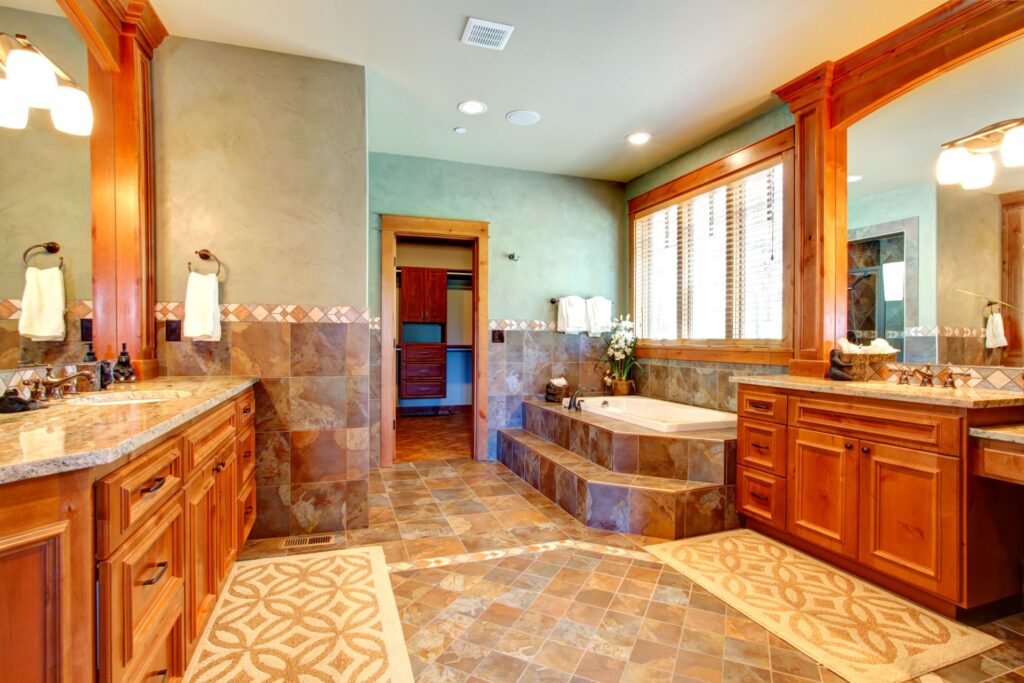
Tile trim is essential in bathrooms, where moisture, exposed edges, and detailed tile layouts are common. Whether you’re working on a walk-in shower, tub surround, vanity wall, or full-height tile installation, trim adds durability and a polished look. Here are several trim options commonly used in bathroom tile designs:
- Bullnose tile is ideal along vertical edges, tub surrounds, and the top of wainscoting, where its rounded profile creates a clean, curved finish, softening corners and blending into painted walls.
- Metal trim offers a sleek, modern edge around shower enclosures, niches, and wall ends, using profiles like Schluter to provide a minimalist, moisture-resistant finish that complements contemporary designs.
- Pencil liner is perfect for outlining shower niches or dividing tile patterns, adding subtle definition and structure without disrupting the overall flow of the design.
- Decorative border tiles add a horizontal accent line across large shower walls or backsplashes, introducing color, pattern, or texture to break up expansive surfaces and enhance visual interest.
- Chair rail tile works well in traditional bathroom wainscoting designs, separating different tile styles or finishes while adding an element of classic architectural detail.
- Quarter-round or cove base trim is useful where tile meets the floor or an adjacent wall, creating a smooth transition while preventing water from collecting in hard-to-reach corners.
Each of these trims serves a specific purpose while enhancing the overall design. Selecting the right type depends on the room’s layout, the style you’re aiming for, and how much edge protection is needed.
Kitchen Tile Trim Ideas
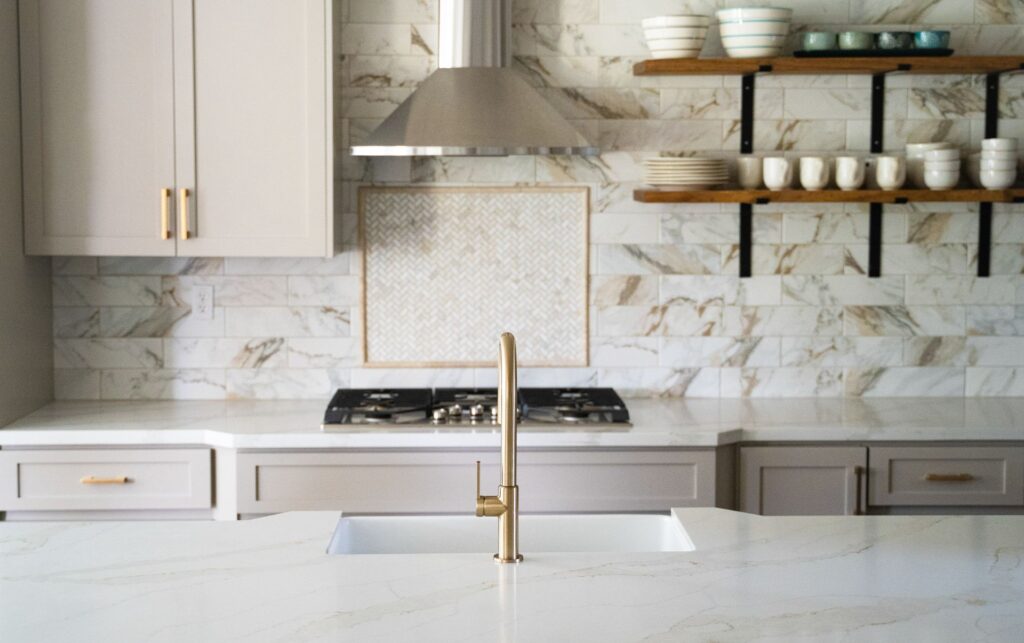
In kitchen spaces, tile trim is most often used to finish backsplashes and define transitions around cabinets, windows, and countertops. Choosing the right trim helps protect edges from chipping, creates clean stops for tile layout, and adds polish to the overall design. Here are common tile trim applications in kitchens:
- Bullnose tile is commonly used to finish the top or side edges of a backsplash, especially where tile meets drywall, offering a clean, rounded edge that blends seamlessly with the field tile.
- Metal trim works well in modern kitchens with stainless appliances or matte hardware, giving crisp definition to backsplash edges and window surrounds while adding a sleek, architectural contrast.
- Pencil liner is often used to frame a focal point behind the stove or divide tile patterns, creating a refined, decorative border that highlights key design elements without overwhelming the space.
- Decorative border tiles add visual interest when installed horizontally or as an inset frame, drawing attention to areas above the range, sink, or across a full tile wall with texture or pattern.
- Quarter-round provides a clean finish where backsplash tile meets the countertop, especially when not using a caulked grout line, and also wraps neatly around exposed outside corners.
- Chair rail tile can define upper or framed sections of a backsplash in traditional kitchens, lending structure to inset designs or wall panel-style layouts in farmhouse and vintage-inspired spaces.
Floor Tile Trim Ideas

Floor tile transitions present unique challenges-especially where tile meets different flooring materials or changes elevation. Trim helps create safe, smooth transitions and protects tile edges from cracking or lifting over time. Here are common trim types used on tiled floors:
- Metal transition strips are used where tile meets wood, carpet, or vinyl, creating a flush, protective edge that reduces tripping hazards and keeps both surfaces intact.
- Schluter ramp profiles are designed for subtle height differences between flooring types, making them ideal for smooth transitions between tile and concrete, laminate, or other lower materials.
- Cove base tile is typically installed where tile floors meet the wall, with a curved profile that improves drainage and simplifies cleaning in bathrooms, laundry rooms, and utility spaces.
- Quarter-round offers a clean, rounded finish where tile meets walls or cabinetry, helping to conceal expansion gaps and uneven edges while softening the perimeter transition.
- V-cap edging is used on tiled steps or raised platforms, with a rounded front that protects sharp edges and gives stair risers or ledges a more polished, finished look.
Accent and Feature Wall Tile Trim Ideas
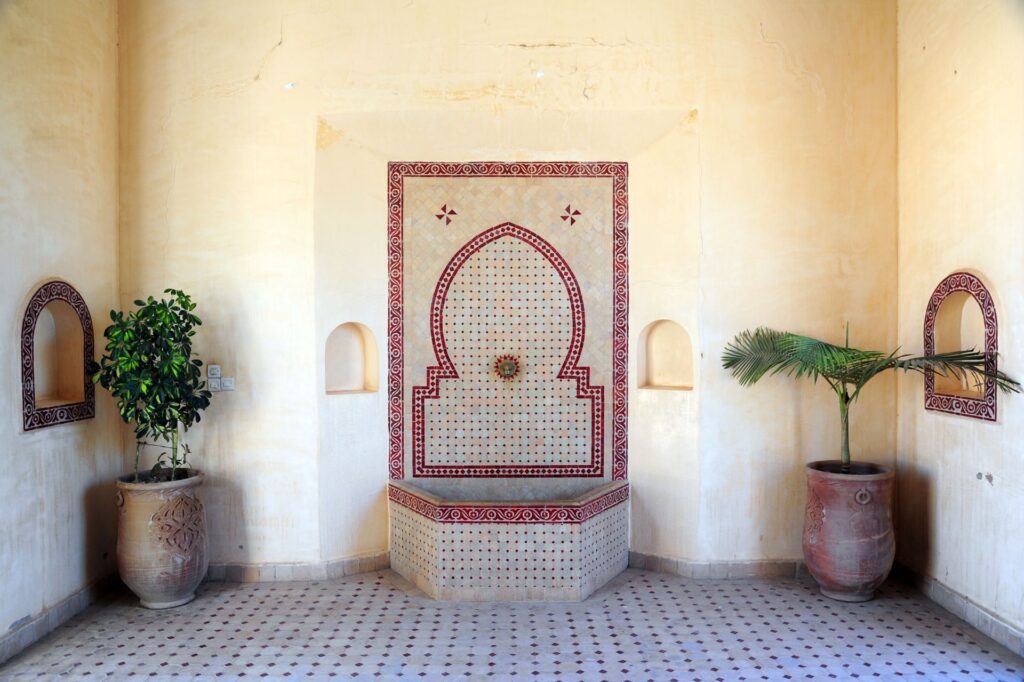
Accent and feature walls offer opportunities to use tile trim as a design element, not just a finishing tool. Whether you’re creating a tiled fireplace surround, statement shower wall, or backsplash focal point, trim helps define the space and make it feel intentional. Here are some ways to use tile trim in decorative wall applications:
- Pencil liner is ideal for framing mosaic insets, niche openings, or decorative tile panels, offering a subtle outline that defines the space without competing with the surrounding design.
- Chair rail tile adds architectural detail near the top of a wainscot or decorative tile section, especially in traditional or transitional spaces where layered trim enhances the overall look.
- Decorative border tiles introduce contrast when used horizontally or vertically, breaking up large areas of tile and guiding the eye toward feature walls or focal points.
- Metal trim provides a clean, modern frame for accent walls or bold tile layouts, making it the perfect choice for sleek, high-contrast designs with minimalist tile edging options.
- Bullnose tile neatly finishes the edges of framed features or partial-height walls, creating a smooth, rounded transition between tile and drywall for a complete, professional look.
10 Things to Consider When Choosing the Right Trim
Selecting the right tile trim is about more than just matching colors. It’s about balancing function, aesthetics, and installation needs. The right trim will make your tile installation look polished and last longer, while also complementing the room’s style and layout. Here are the key factors to consider when choosing the best trim for your project:
- Match or contrast: Decide whether you want the trim to blend with your tile or stand out as an accent. Bullnose and base trims often match, while metal or decorative options create contrast.
- Material compatibility: Choose a trim material that works with your main tile. Ceramic, porcelain, natural stone, glass, and metal trims each behave and install differently.
- Location and exposure: In wet areas like showers or tub surrounds, opt for trims that seal well and resist water-such as bullnose tile or metal edging.
- Design style: Sleek metal trims work well in modern spaces, while chair rails, decorative borders, and pencil liners suit more traditional or detailed interiors.
- Installation details: Some trim types (like radius edges or V-caps) require careful planning and expert installation. Confirm trim compatibility with your tile’s thickness and layout.
- Budget considerations: Trim pieces can be more expensive than field tile. Factor this into your material costs, especially when trimming large areas or multiple surfaces.
- Tile thickness and trim depth: Make sure your trim sits flush with the tile. If you’re mixing materials, like pairing ceramic tiles with thicker stone accents, you may need deeper trim profiles.
- Color and finish durability: Consider how well the trim’s finish will hold up over time, especially with metal or glass options exposed to frequent cleaning, sunlight, or humidity.
- Availability and lead time: Some trim styles or specialty finishes may need to be custom-ordered. Confirm availability early to avoid project delays.
- Code or accessibility needs: In commercial or ADA-compliant spaces, certain trim profiles help meet safety, slope, or hygiene requirements, especially at floor transitions and wet areas.
Ready to Finish Your Tile Project the Right Way?
The right tile trim does more than complete the look-it protects your investment, simplifies transitions, and elevates the overall design. Whether you’re updating a bathroom, redoing a kitchen backsplash, or installing custom tile flooring, thoughtful trim choices are what set a professional-grade job apart from an average one.
If you’re planning a tile project and want expert guidance on selecting and installing the right trim, working with an experienced team can save time, reduce stress, and ensure long-lasting results. At Builders Interiors, our designers and installers help clients every day turn their vision into a clean, finished space down to every last detail.


